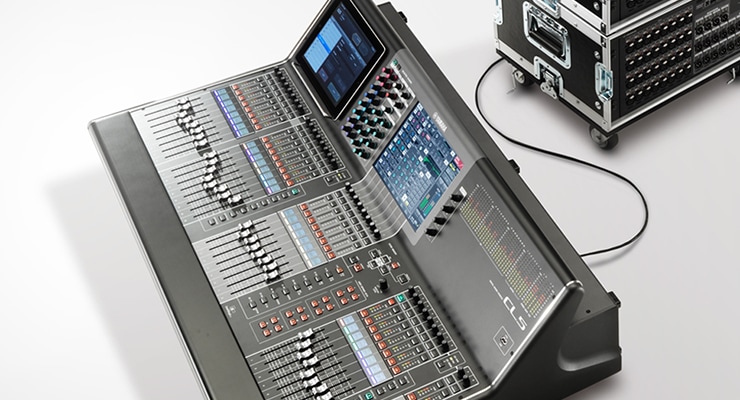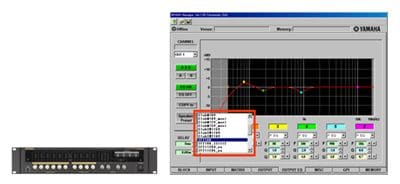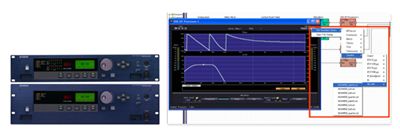Better Sound for Commercial Installations
Part 3: Mixers and Processors

04. Tuning a Sound System
Once the physical components of a sound system have been properly installed, then it's time to begin the process of "tuning" the system for optimum matching with the acoustic characteristics of the space as well as the speakers used. If the system is not properly tuned, the full potential of all the carefully selected components will not be realized.
Speaker Processing (Tuning for the speaker system)

Post-installation tuning can be broadly divided into two types: speaker tuning, which is processing specifically aimed at maximizing the performance of the speakers themselves, and room tuning, which addresses the acoustic characteristics of the space in which the sound system will function. We'll start by looking at speaker processing.
As we noted in "Speaker Layout and Sound Pressure Level" in Part 2, different speaker systems usually have different frequency and phase characteristics. Speaker processing compensates for these differences, with the goal of producing the most natural reproduction possible.
Effective speaker processing requires that the characteristics of the speaker systems being tuned can be precisely mirrored in the processing devices. As digital processing has becomes more mainstream in recent years, speaker system manufacturers have been supplying accurate preset data that can simply be read into the processor to achieve the recommended tuning for individual models. Such services are valuable in achieving optimum performance, and it is a good idea to select speakers and processors that come with that type of support.
The Yamaha IMX644 installation mixer, for example, is supplied with preset data for Yamaha speaker systems that can be simply selected from a menu provided in the IMX644 Manager setup software. Using the preset data as a starting point, the equalizer and delay functions included in the IMX644 can be tweaked to achieve ideal performance.

(Figure: Preset speaker data for the Yamaha IMX644 installation mixer can be easily applied via the IMX644 Manager software.)
In the same way, preset speaker data for the Yamaha DME series digital mixing engines can be easily selected and applied via the DME Designer software speaker processor display. The DME series includes speaker processor components specifically designed for this purpose that include equalization, delays, crossovers, limiters, and other functions that are indispensable for proper speaker tuning. And since the preset data has been specifically programmed for these components, efficient, accurate speaker processing performance is assured.
(Figure: A comprehensive range of preset data that can be easily applied via the DME Designer speaker processor display is provided for Yamaha DME series digital mixing engines.)
Room Tuning (Tuning for room acoustics)
Next is room tuning. The requirements for this process can change drastically according to the shape, size, decor, furnishings, and other aspects of the room or space. Even in our own homes the difference in sound between the living room and bathroom, for example, are quite obvious. The size of the room and the materials used for the walls, floor, and ceiling all have a huge effect on the way sound is reflected within the space. Going beyond simple reflections, the way those reflections interact and interfere with each other has a significant effect on the sound as well.
Room tuning is the process of compensating for the complex acoustic characteristics of a space so that the most natural, most consistent, and most intelligible reproduction is achieved. One important aspect of room tuning is feedback control. More details will be provided in the "Feedback Control - Feedback Causes" section that follows, but basically feedback - a loud squeal or continuous tone that spontaneously erupts from the sound system - results when the natural acoustic characteristics of a space tend to emphasize specific frequencies. In such cases equalization must be used to reduce the level of the offending frequencies.
And that begins our discussion on the subject of feedback, which will continue for the next few sections. Feedback is a problem that is encountered in most sound systems, so we'll examine it in detail in the next three sections.
Contents
The sound systems that broadcast the information you're hearing have been carefully designed and installed to suit the needs of each individual facility.
This series offers information aimed at achieving the best possible sound in commercial installations, from the basics to equipment selection and day-to-day operation.








